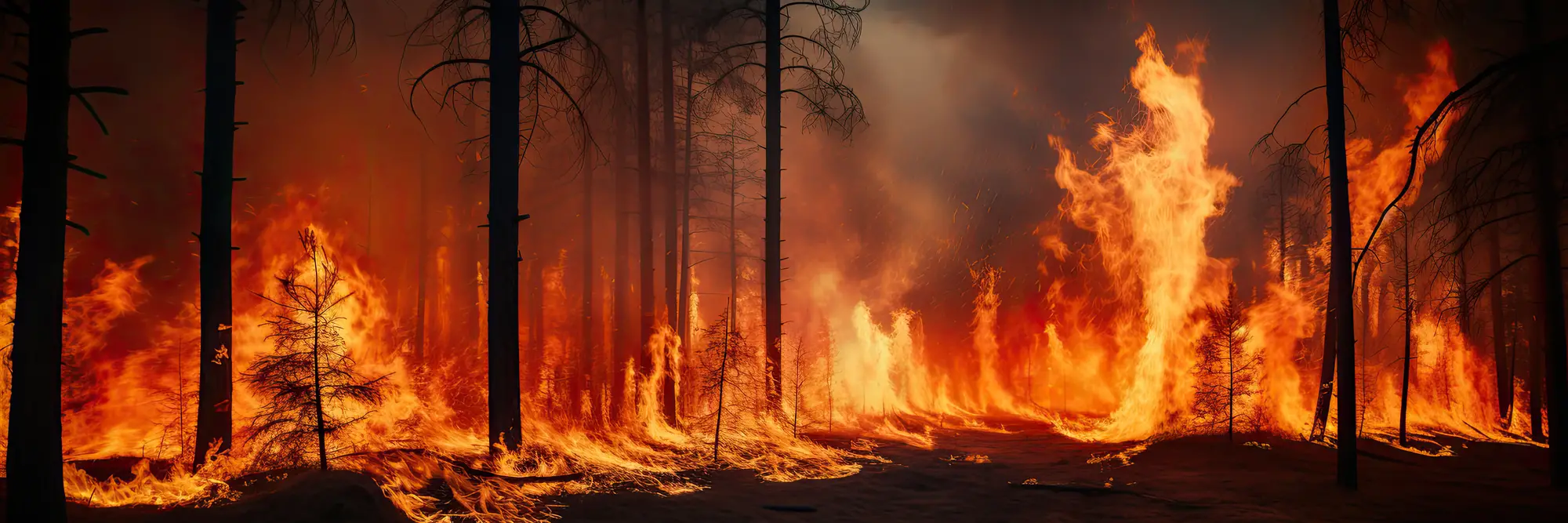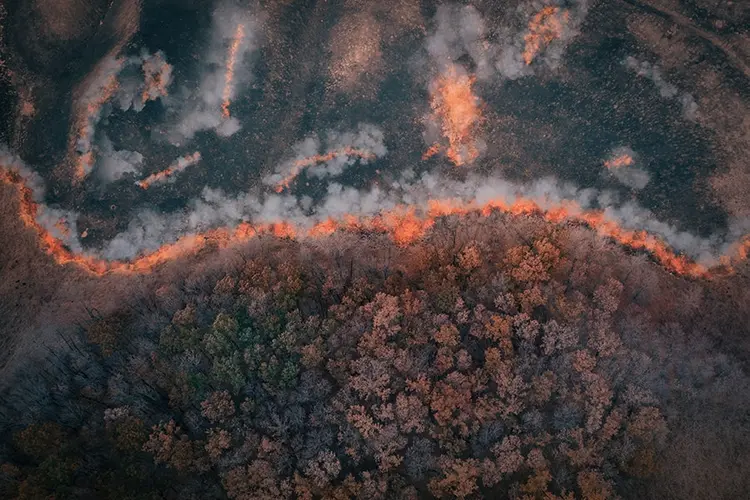
Smoke from US Wildfires, Prescribed Burns Caused Premature Deaths, Billions in Health Damages
Elderly, Native Americans, and Black communities suffered greatest harms
Media Inquiries
Since the end of the 20th century, air pollution from most U.S. sources has decreased, but emissions from wildland fires have risen. In a new study, researchers estimated that smoke from wildfires and prescribed burns caused $200 billion in health damages in 2017, and that these were associated with 20,000 premature deaths. Senior citizens were harmed the most, and Native American and Black communities experienced the greatest damages per capita.
The study, by researchers at Carnegie Mellon University's Tepper School of Business(opens in new window), appears in Communications Earth & Environment.
“Many studies have found that fire smoke, like other air pollutants, is associated with increased morbidity and mortality risk,” explained Nicholas Muller(opens in new window), CMU's Lester and Judith Lave Professor of Economics, Engineering and Public Policy, who coauthored the study. “But until recently, the associated social costs were less well understood.”
Fires produce ammonia, nitrogen oxides, primary fine particulate matter (PM2.5), sulfur dioxide and volatile organic compounds, all of which contribute to concentrations of ambient PM2.5. Any level of long-term exposure to PM2.5 is statistically associated with increased risk of mortality. Hence, in addition to the costs associated with fires themselves (e.g., flame-related injuries or deaths, property damage), substantial costs are associated with exposure to the resulting smoke. Similar pollution risks come from prescribed burns, which are used widely to mitigate wildfire risks.
In this study, researchers used an integrated assessment model to investigate the damages caused by ambient PM2.5 from smoke from wildfires and prescribed burns in census tracts across the contiguous United States in 2017.
Damages from fire smoke in 2017 amounted to more than $200 billion (17% of the total across all emission sources in the contiguous United States). The monetary damages are from approximately 20,000 premature deaths; roughly half were due to wildfire smoke and half were due to prescribed burns. In addition, the study found that:
- Nearly half of the damage came from wildfires, predominantly in the West, with the remainder from prescribed burns, mostly in the Southeast.
- Exposure to smoke correlated positively with various measures of social vulnerability, but when also considering susceptibility to smoke, these disparities were systematically influenced by age.
- Senior citizens, who are disproportionately white, represented 16% of the population but incurred 75% of the damages.
- Nonetheless, within most age groups, Native American and Black communities experienced the greatest damages per capita.
“Our work reveals the extraordinary and disproportionate effects of the growing threat of fire smoke,” said Luke Dennin(opens in new window), a Ph.D. student in engineering and public policy at Carnegie Mellon, who led the study. “We also provide suggestions for local, state and national decision-makers and planners addressing the growing environmental hazard of fire smoke, particularly its impact on vulnerable communities.” Among their suggestions:
- Expanding real-time air quality monitoring and enhancing public outreach — particularly through trusted community leaders — in smoke-prone areas could better inform vulnerable and historically marginalized groups on how to adapt.
- Because indoor air quality also deteriorates during smoke events, investing in filtration technologies could establish clean air spaces in locations strategically targeted to vulnerable populations and accessible to the public, such as senior centers in lower-income neighborhoods.
- Distributing respiratory protection, such as N95 masks, through well-coordinated systems before or during smoke events could help safeguard populations with limited access to safe indoor spaces, including outdoor workers.
The study was funded by the U.S. Department of Energy’s National Energy Technology Laboratory and KeyLogic, by the National Science Foundation, and by the Heinz Endowments.


